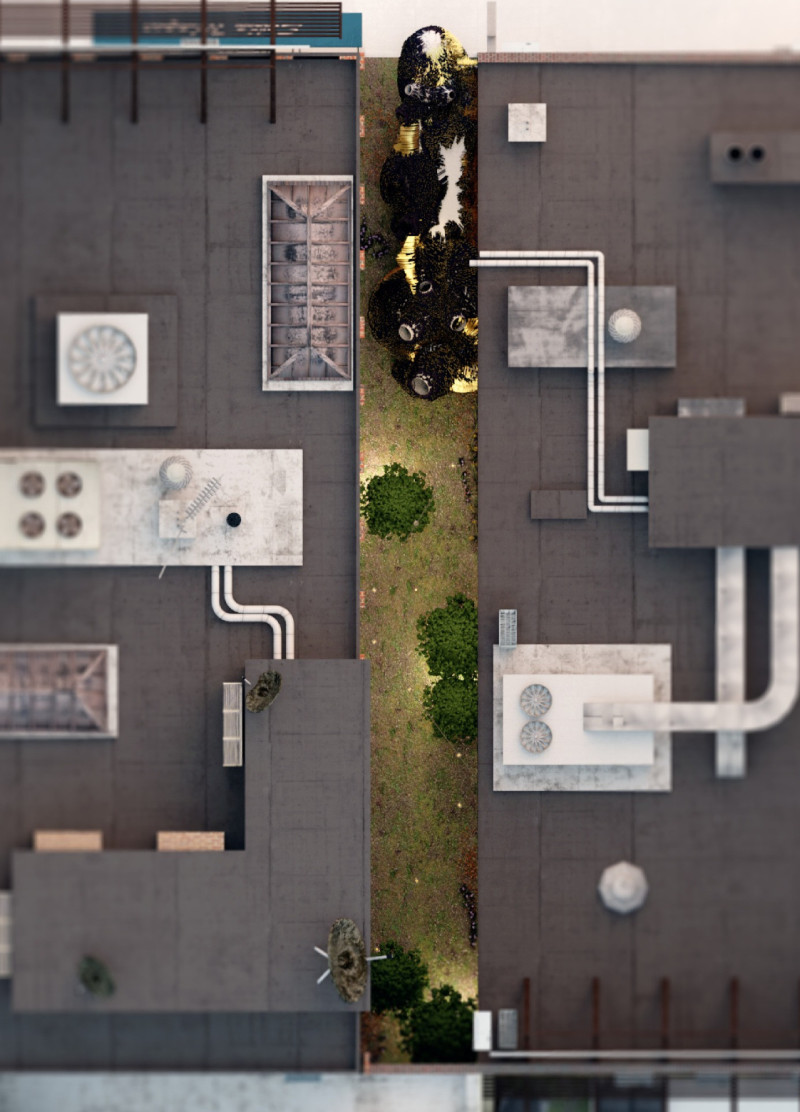5 key facts about this project
The Little Fringe House presents a unique approach to residential design, combining distinct form with functional living. Located in an urban alley between two large buildings, it stands out while also fitting into its environment. The design contrasts a dark exterior with a warm interior, creating a welcoming atmosphere. Upon entering, residents and visitors experience a shift as light and soft colors fill the space, inviting exploration and interaction.
Structural System
The design incorporates a concrete slab along with a pre-cast concrete waffle wall, creating a strong foundation. This structural choice allows for an open floor plan, minimizing the need for intrusive columns or walls. The result is a fluid living space that connects the different areas of the house. The waffle wall acts as a support for the second floor, which is secured in place by brackets and bolts.
Exterior Features
Cone-shaped windows are a notable characteristic of the exterior. These windows not only add visual interest but also allow natural light to brighten the interior. They frame views of the surroundings, encouraging a connection between the house and its urban setting. The design emphasizes this relationship and enhances the living experience within the home.
Spherical Elements
Spherical shapes are carefully integrated into the house’s design. These elements serve both aesthetic and functional purposes, providing additional living space that can change according to need. When in use, they open up to blend indoor and outdoor areas, allowing for greater interaction with the green spaces nearby.
Materiality
The building's design employs lightweight framing and metal paneling to keep its appearance airy. Custom metal panels, with perforations for added texture, contribute to the overall façade. This choice of materials maintains visual unity while providing durability.
The arrangement of spaces inside is designed to create cozy spots for quiet reflection, alongside larger areas for gatherings. This blend offers residents both privacy and a chance for social interaction, contributing to a balanced living environment.






















































